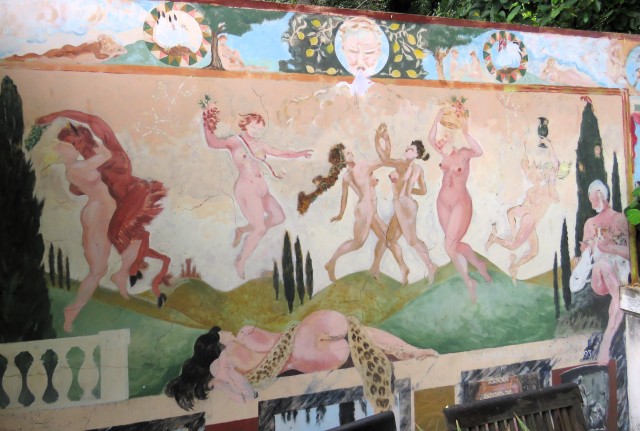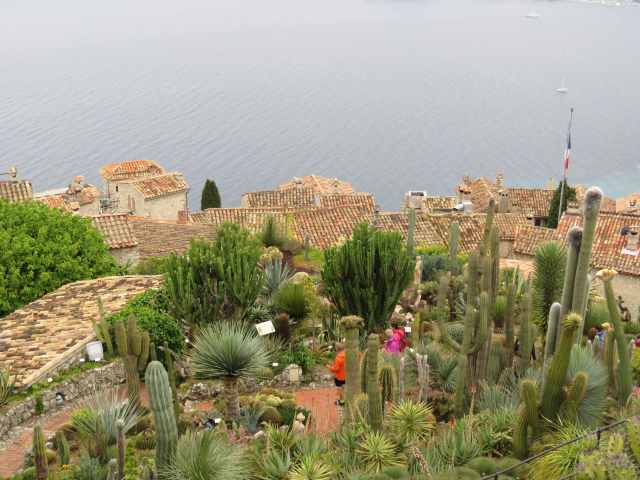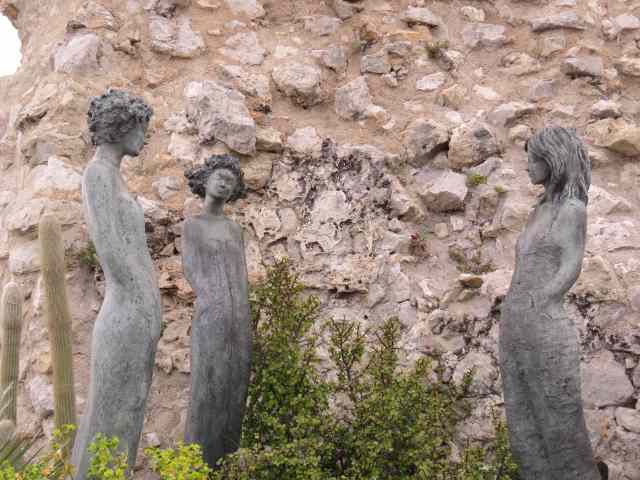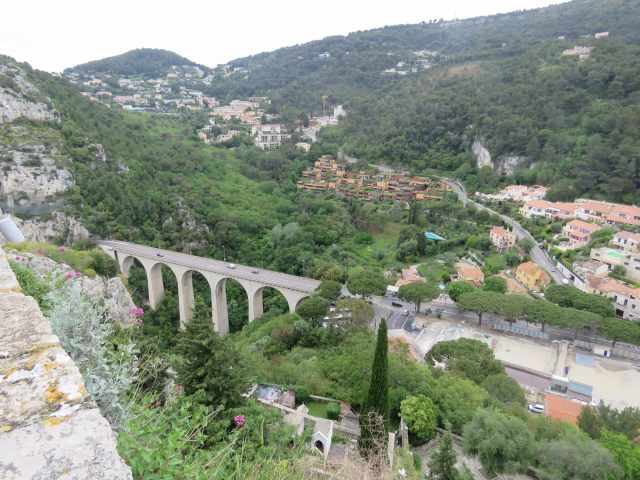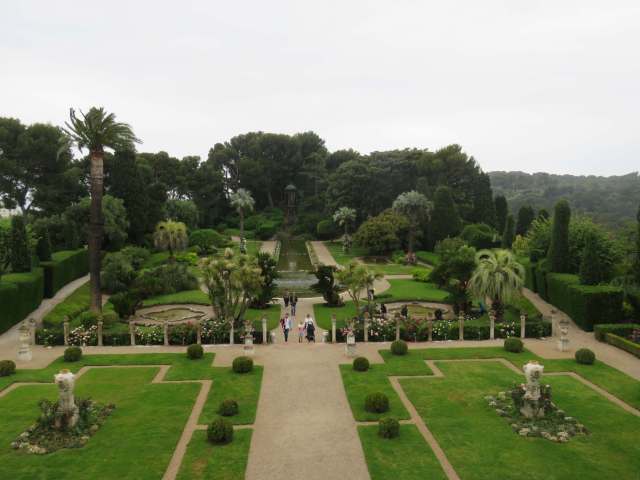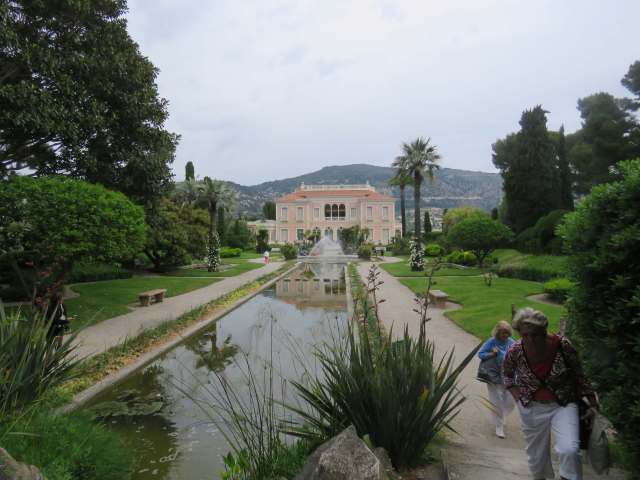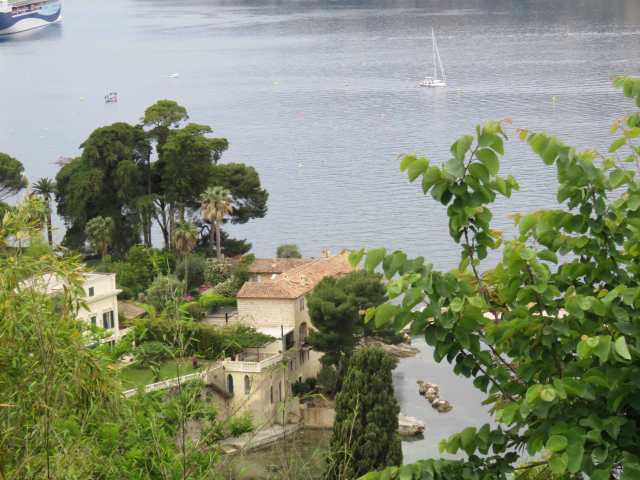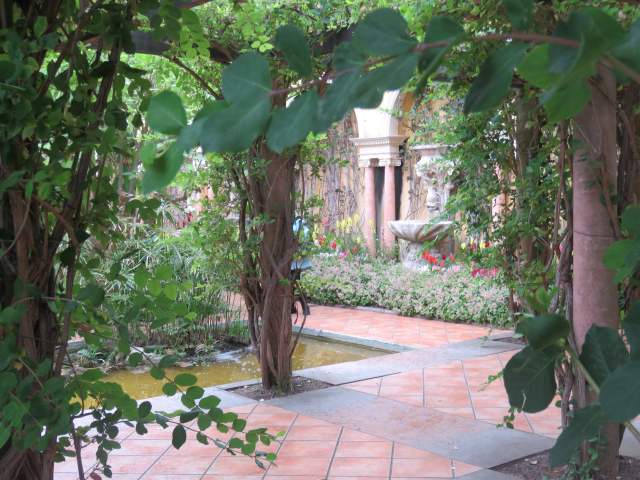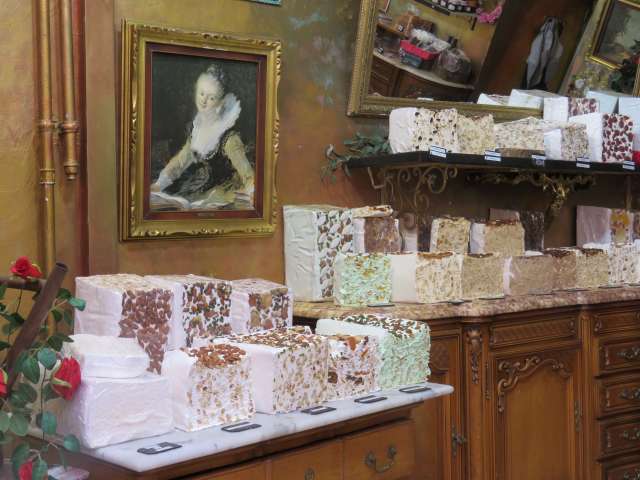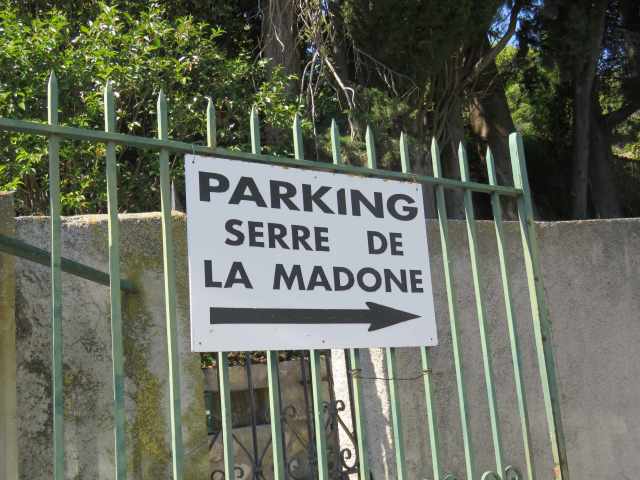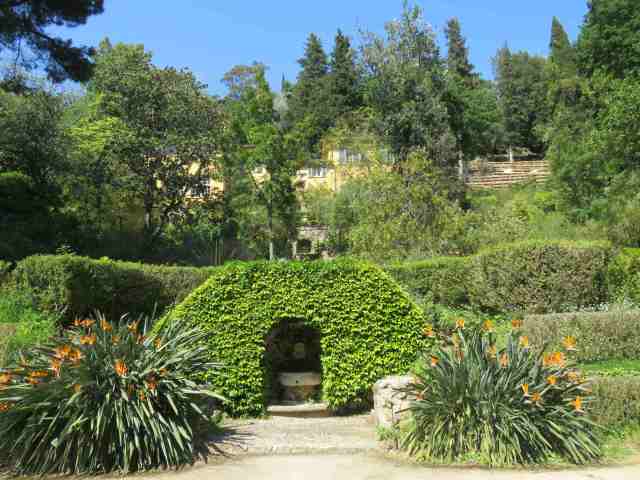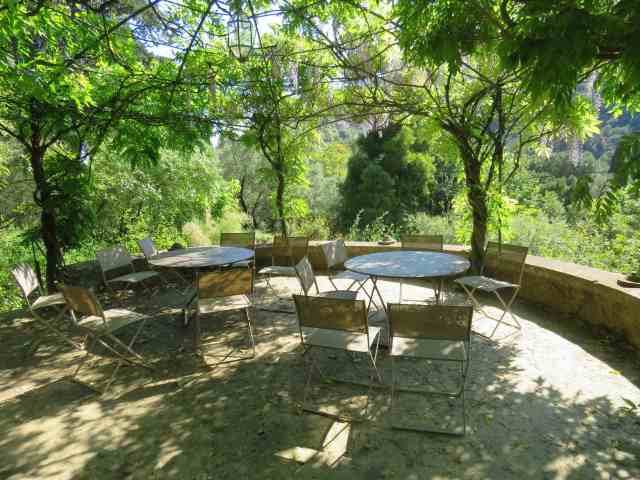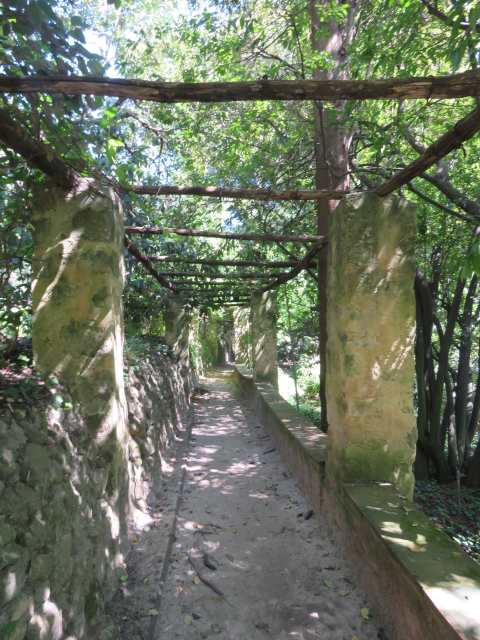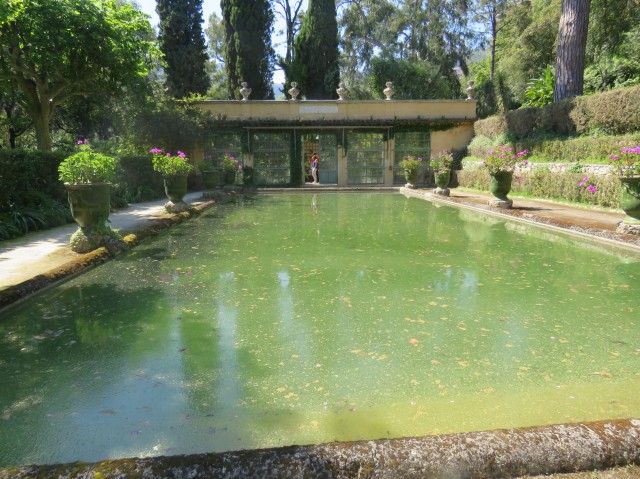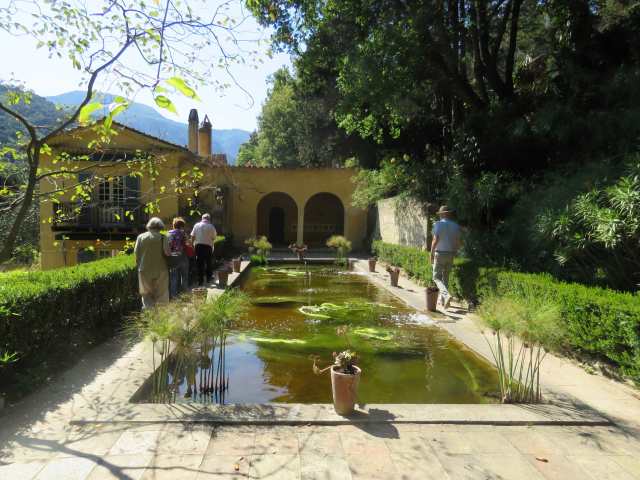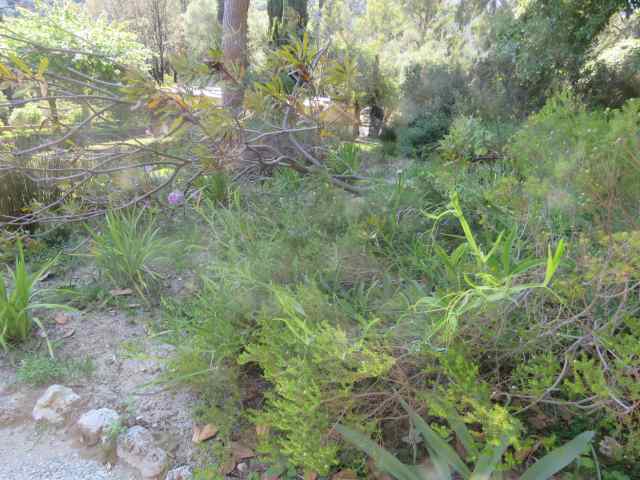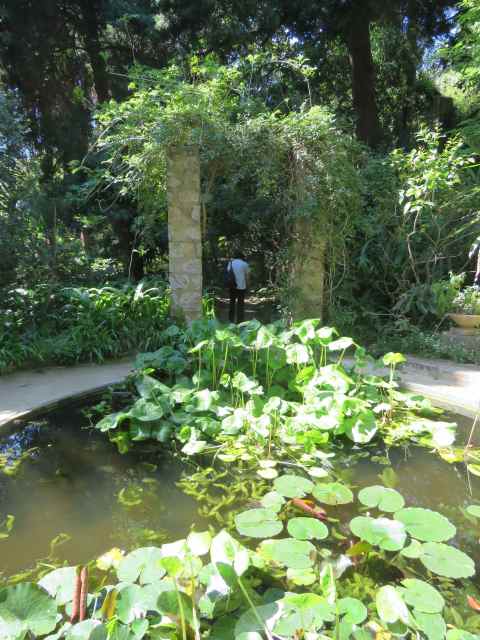The two gardens I enjoyed the most on my recent jaunt around gardens in the French Riviera were the private ones where we were welcomed by the owners. I can relate to the scale, the personal vision and the detail that comes in good private gardens.
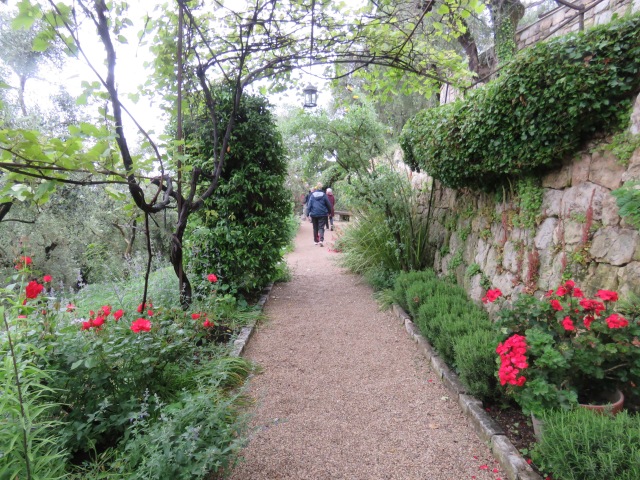
La Mouissone, near Grasse, may have a French name but the owner and hands-on gardener, Lady Lockett, is as English as they come, even though she has lived there for many years – presumably since they purchased the property in 1998. A down to earth (how appropriate), characterful and energetic woman, it was a delight to be taken around by her.
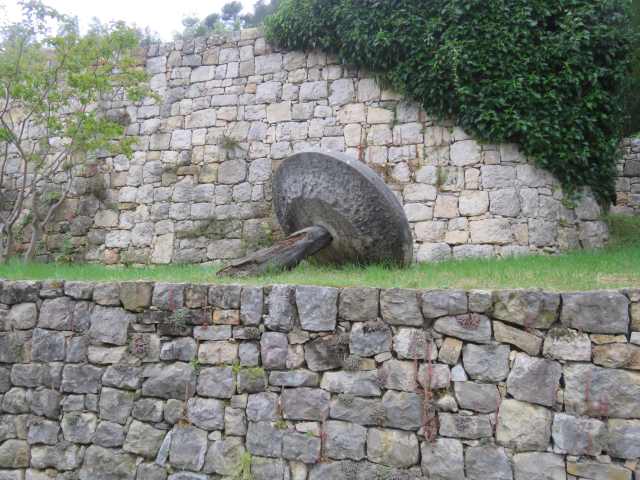
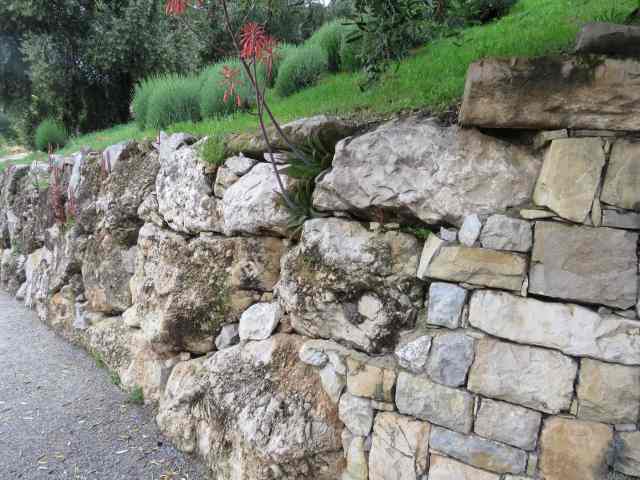
Our tour leader told us in advance that it had taken 15 stonemasons 10 years to build the walls, or was it 10 stonemasons for 15 years? And Lady Lockett cheerfully told us the stonework cost a million euros. Gulp. As a result, I expected a garden which was all about stonework but au contraire. The stone walls and terraces were all about turning a steep, old olive grove into a series of terraces that could be gardened and lived in. The owner then set about planting to soften the stone and to feature the plants. She gardens in that soft-edged, romantic way that is so very English in style.

The garden covers 3 hectares and is built around 250 aged olive trees which are still in full production. It is still a comparatively new garden with an owner-gardener who is happy to experiment and change aspects as it matures.

In mid May, it was unusually lush and green because of the recent rains. Apparently, it is usually dry at that time of the year and I imagine it is now, with the heat wave hitting southern Europe. My daughter, who is living on the other side of the south of France (on the Spanish border, not the Italian border that meets the Riviera) tells me that the winds have blown up from the Sahara and everything around her is covered in a fine layer of Saharan sand. La Mouissone may look different this month – a reversion to the norm of dry grass in golden hues offset by the grey-green foliage of the olives.


I appreciated Lady Lockett’s attention to plants and her interest in expanding the plant collection as she finds other options to grow in the poor soils and hard climatic conditions. I also liked that it is clearly a family garden – a playhouse for the grandchildren, a family swimming pool, outside seating areas placed where it is likely they would be used, extensive vegetable gardens. It makes it a very personal garden.
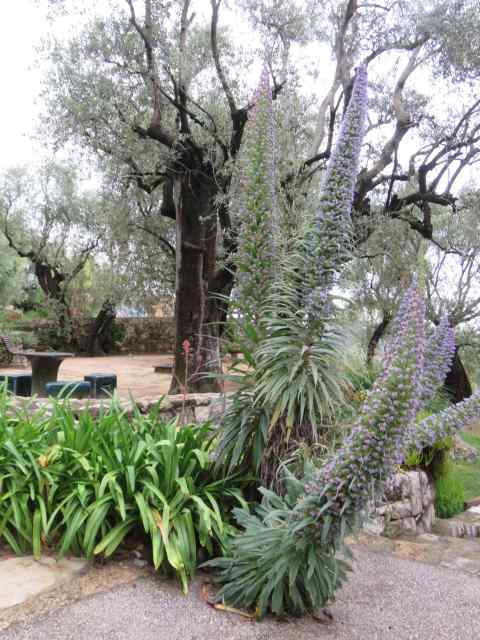
The biggest disadvantage of being on a tour is that one must move at the pace of the tour. This is a garden I would have enjoyed spending more time in, taking time to sit and look, exploring further and then going back around in the opposite direction to experience it in reverse. It is a garden I would go back to except I am unlikely to return to this part of France. I see it is open to visits by appointment; their website is www.lamouissone.com
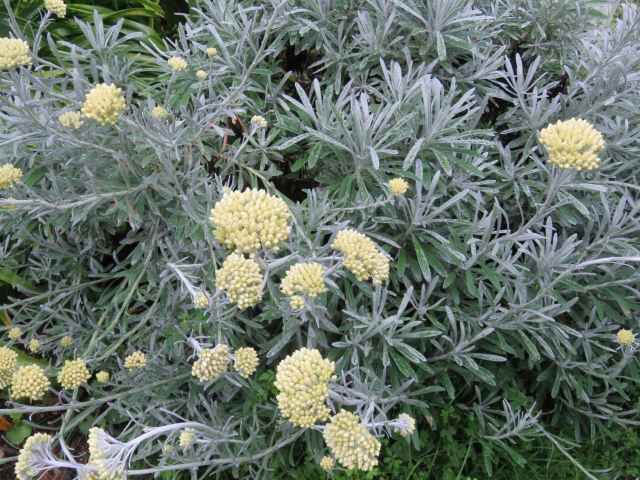


While La Mouissone is firmly anchored in the modern style – call it the new naturalism, New Perennials or what you wish, Clos du Peyronnet harks back to an earlier generation, is well established in the Arts and Crafts style. The Waterfield family bought the land in Menton, close to Lawrence Johnston’s Serre de la Madone, and built the villa as a winter retreat at the end of the nineteenth century. The garden in its current form is 1950’s vintage. Humphrey Waterfield is credited with the initial design and plantings while William Waterfield, who took over in 1976, added the many layers of different plant material – including the extensive bulb collection – and extended the garden features, building upon his uncle’s earlier work.

I think the reason I liked Clos du Peyronnet so much is perhaps that it was close to what I hoped Serre de la Madone would be – and indeed may have been in its day. Sadly, William Waterfield died in 2021 with no heirs. The garden now is managed by his wife, American Judith Pillsbury. She is no garden novice, having a garden at her Paris apartment that has been written up over the years and as a previous owner of La Louvre in Provence – a garden I recognised as soon as I googled it, from seeing on TV (maybe Monty Don on French gardens?). It was Judith Pillsbury who welcomed us and took us around the garden but the mid to long term future is in doubt.
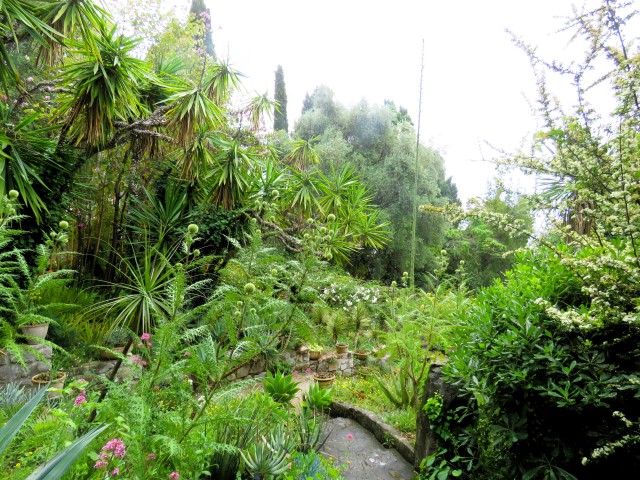
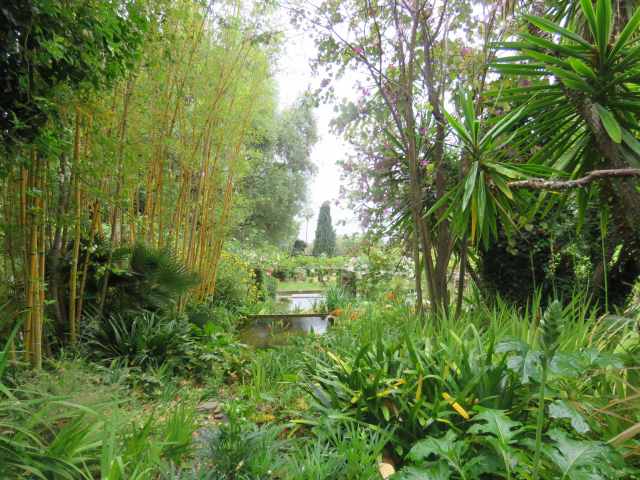

What did I enjoy about it? Good design, interesting plantings, quality hard landscaping that has aged well down the years, character, discreet but attentive maintenance, brilliant location and views. What is not to like? It is English-style gardening in France, spanning seven decades.

Peyronnet has a collection of fruits that are rare in that area of olive trees and citrus. Amongst them was a loquat – Eriobotrya deflexa – with the biggest fruit I have seen. And I spotted a feijoa tree, Acca sellowiana. I subsequently read an article on line that referenced the feijoa – “the unrelated pineapple guava Acca sellowiana (‘tastes like sweet Harpic,’ he confides).” The he in this quote refers to William Waterfield and all I can say is that several million New Zealanders would like to disagree with his Harpic assessment.


The feeling of privilege that comes with getting to see private gardens was reassuring to me to experience from the other side. These days, we only open our garden to a few special interest tours or individuals who manage to convince me they will be interesting people to meet. I had wondered if I was being a bit precious in creating such barriers to prospective visitors. No. It is a privilege to gain access to private gardens and to spend time with the owners. It makes it a special and memorable experience.

